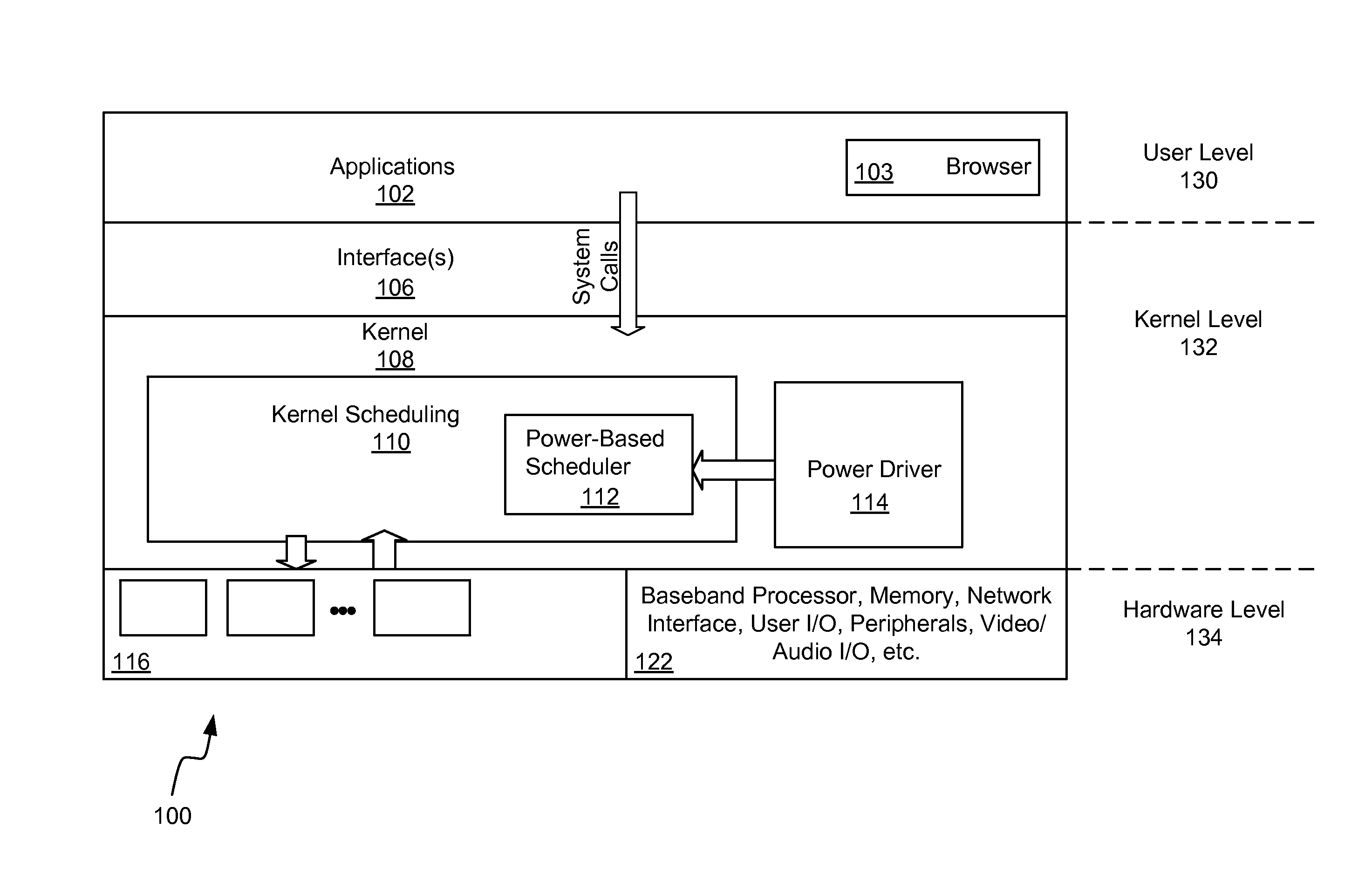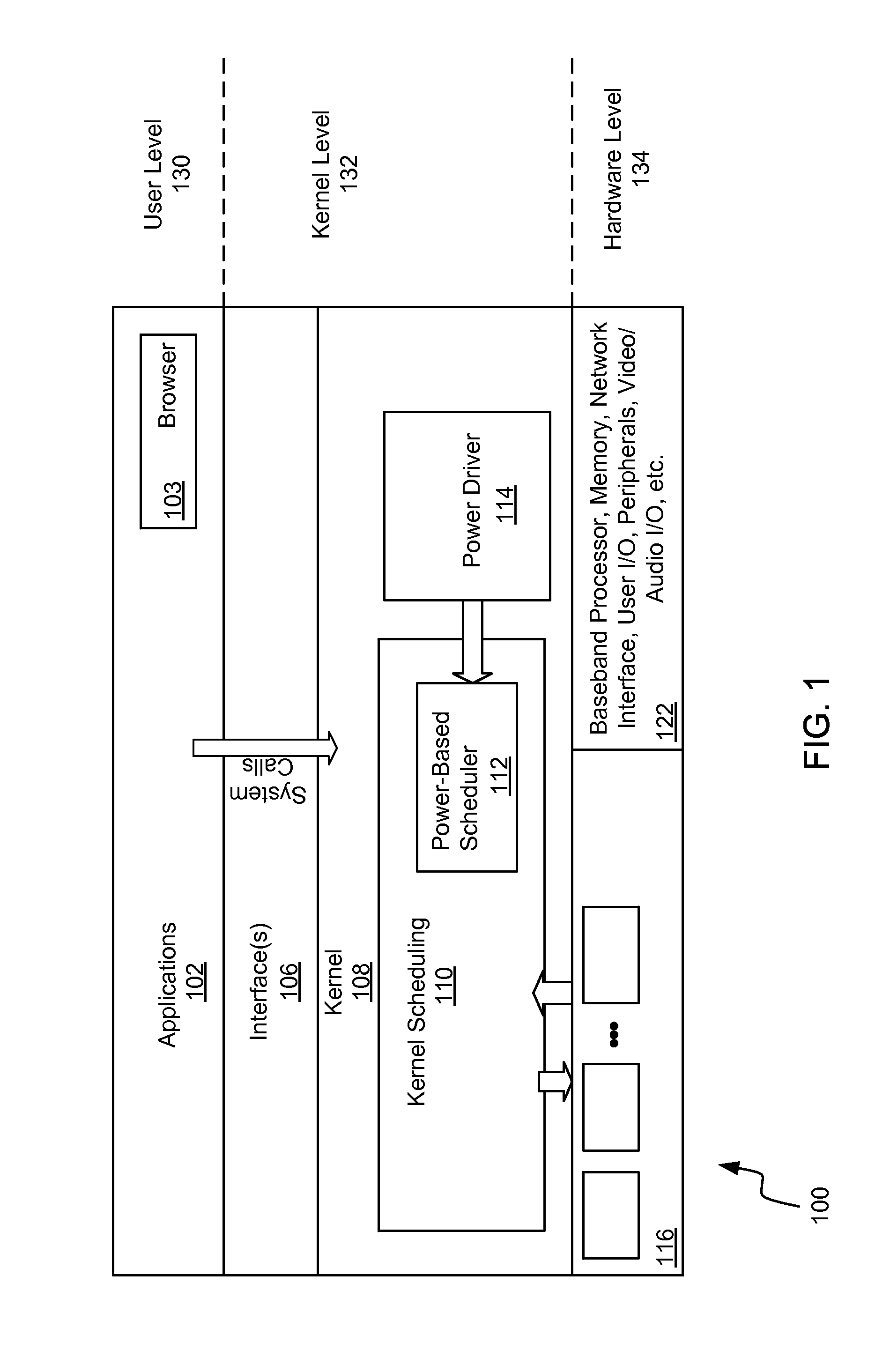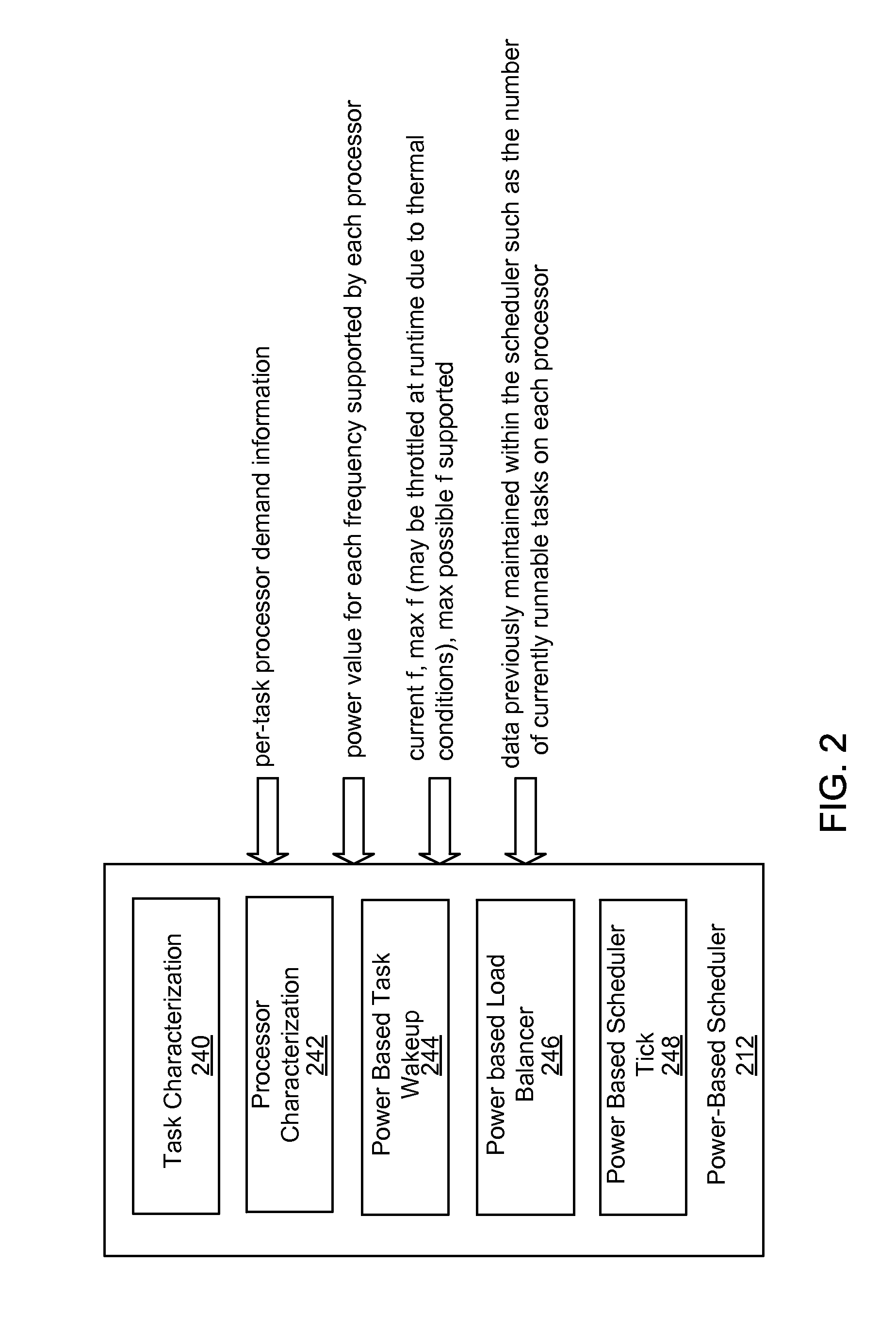Power aware task scheduling on multi-processor systems
a multi-processor system and task scheduling technology, applied in the field of computing devices, can solve the problems of increasing the cost of power consumption, affecting the efficiency of the current system, and the scheduler is unaware of how the power consumption may change, so as to reduce the overall power consumption of the n processors
- Summary
- Abstract
- Description
- Claims
- Application Information
AI Technical Summary
Benefits of technology
Problems solved by technology
Method used
Image
Examples
Embodiment Construction
[0018]The word “exemplary” is used herein to mean “serving as an example, instance, or illustration.” Any embodiment described herein as “exemplary” is not necessarily to be construed as preferred or advantageous over other embodiments.
[0019]Referring to FIG. 1, it is a block diagram illustrating components of a computing system 100 (also referred to herein as a computing device 100). The block diagram includes applications 102 (e.g., a web browser 103) at the highest level of abstraction and hardware such as processors 116 at the lowest level. The kernel 108 along with interface 106 enable interaction between the applications 102 and the hardware level 134. In particular, the interface 106 passes system calls from the applications 102 to the kernel 108. The kernel scheduling component 110 generally operates to schedule tasks among the processors 116. The collection of multiple processors 116 may be closely integrated within an application processor or discrete processors that share...
PUM
 Login to View More
Login to View More Abstract
Description
Claims
Application Information
 Login to View More
Login to View More - R&D
- Intellectual Property
- Life Sciences
- Materials
- Tech Scout
- Unparalleled Data Quality
- Higher Quality Content
- 60% Fewer Hallucinations
Browse by: Latest US Patents, China's latest patents, Technical Efficacy Thesaurus, Application Domain, Technology Topic, Popular Technical Reports.
© 2025 PatSnap. All rights reserved.Legal|Privacy policy|Modern Slavery Act Transparency Statement|Sitemap|About US| Contact US: help@patsnap.com



